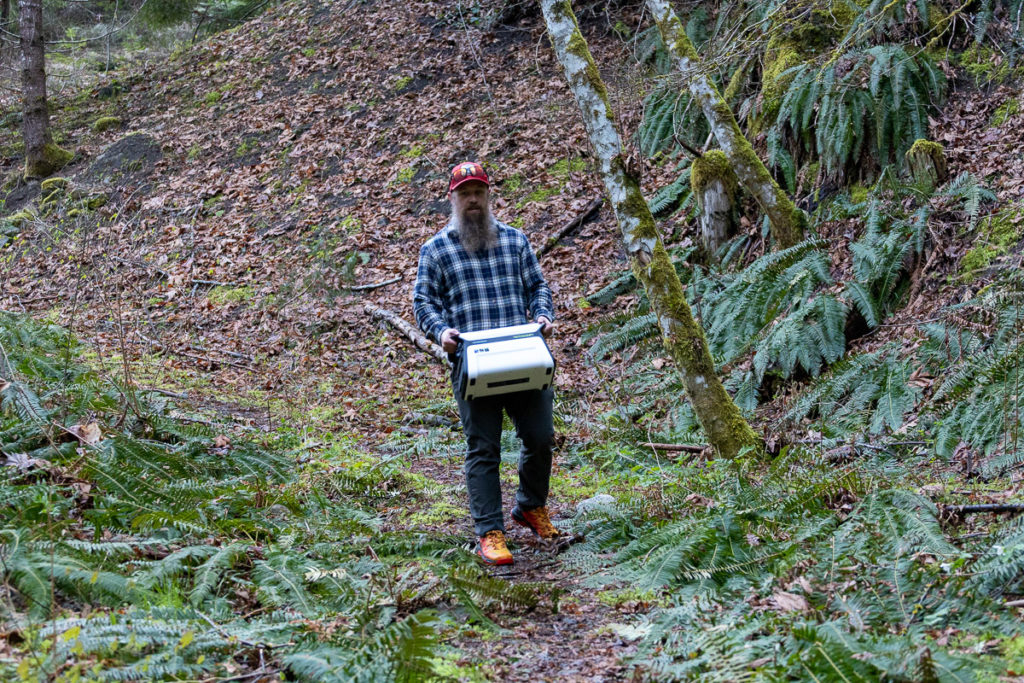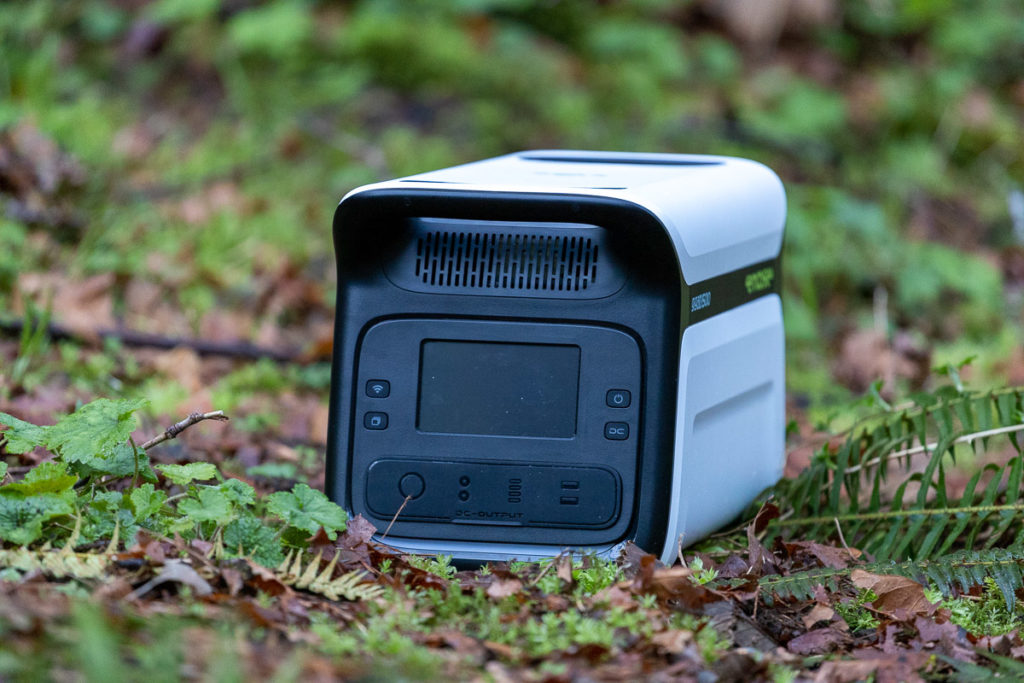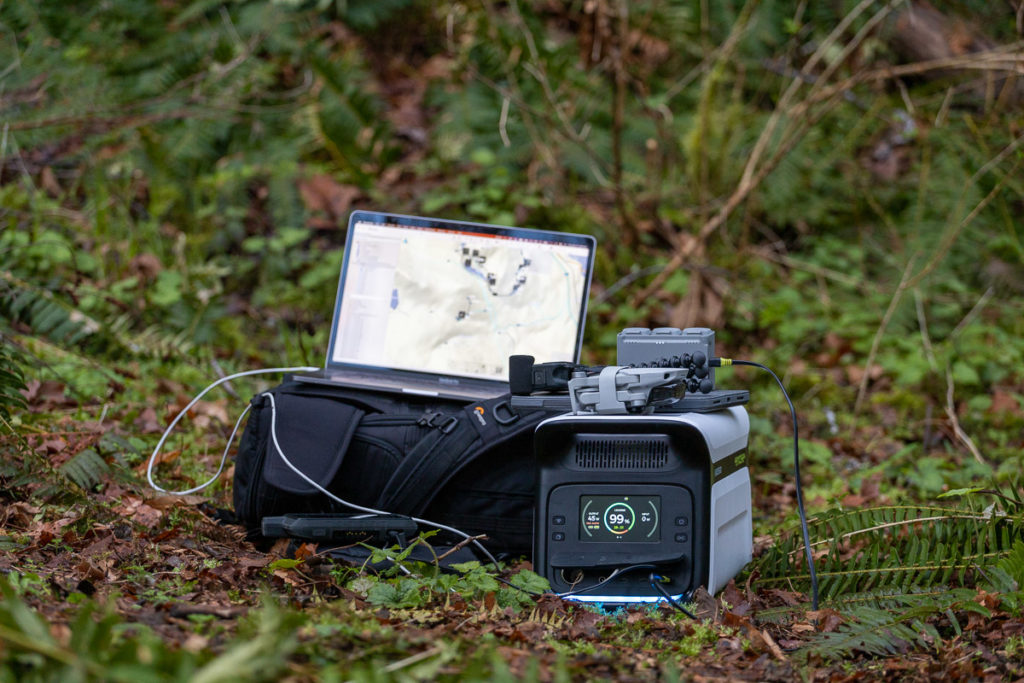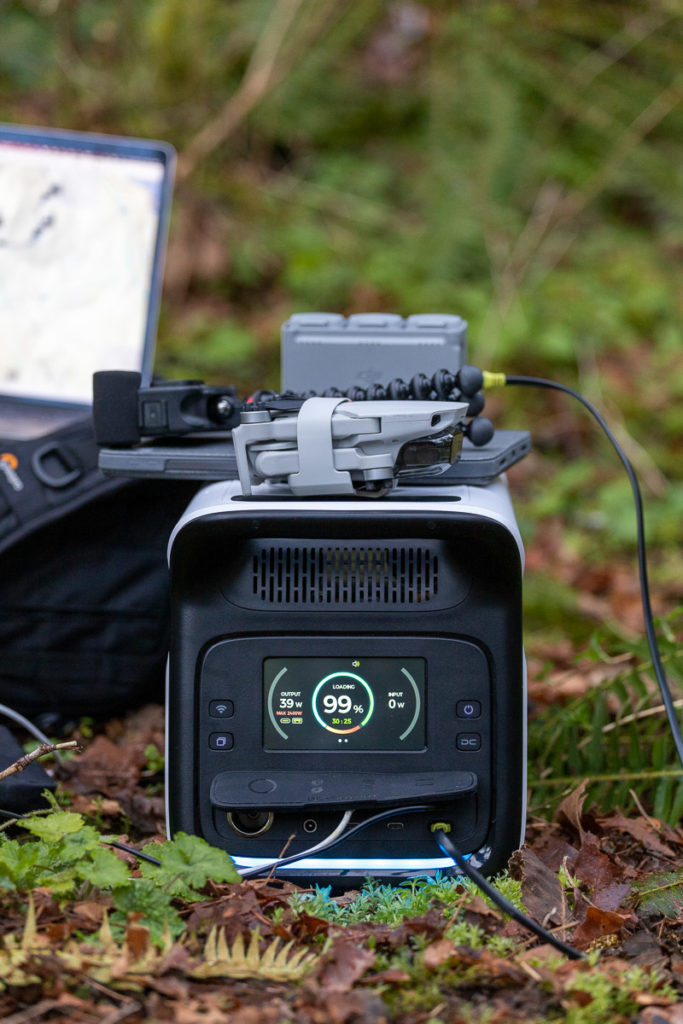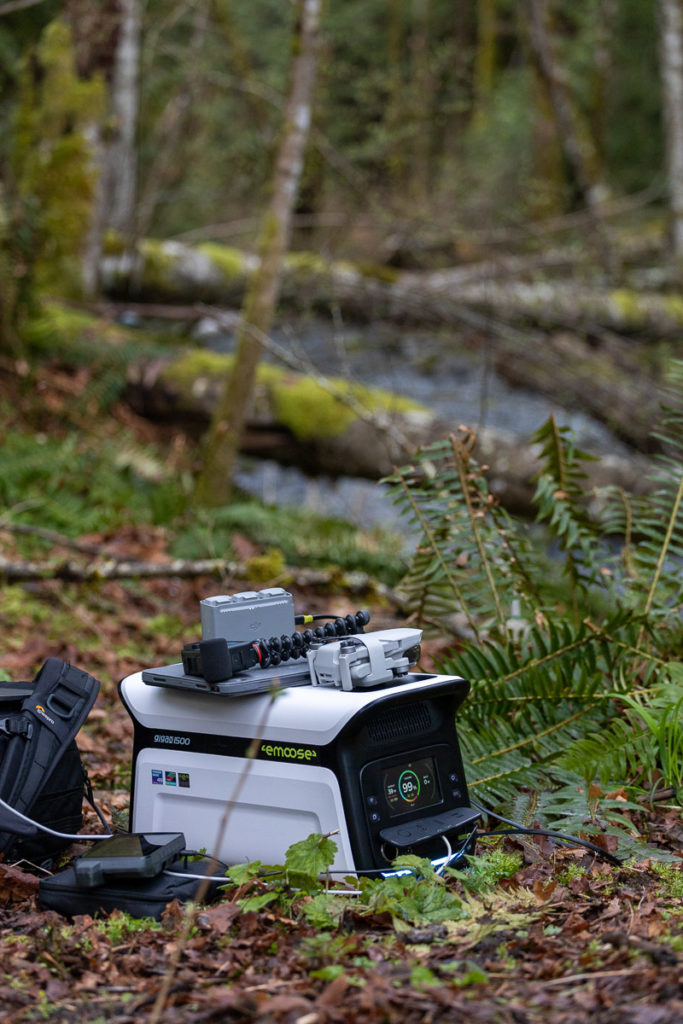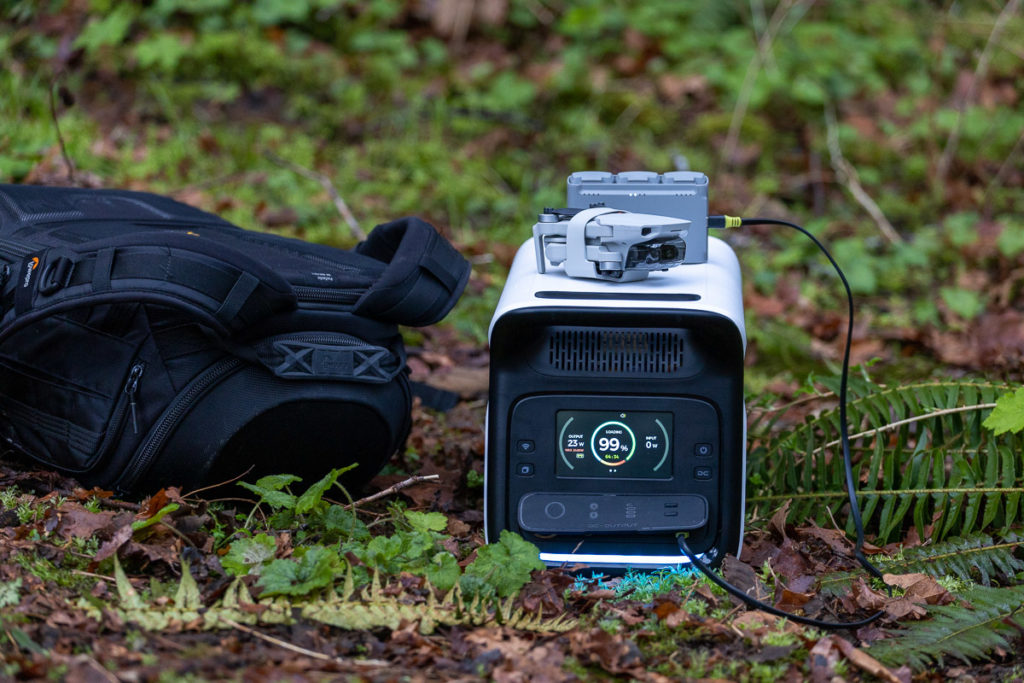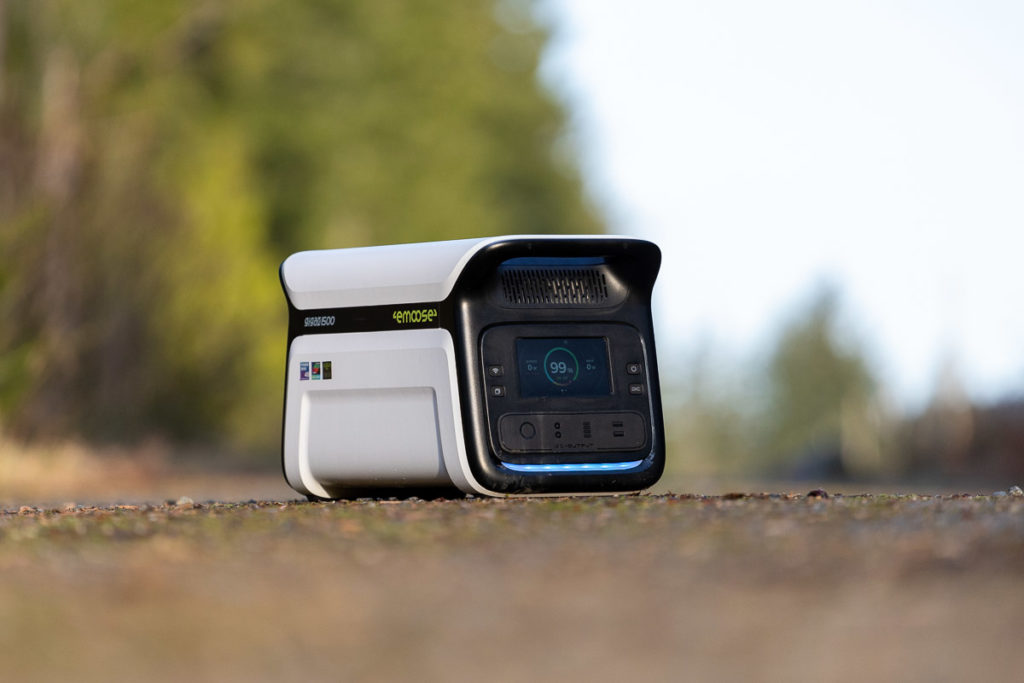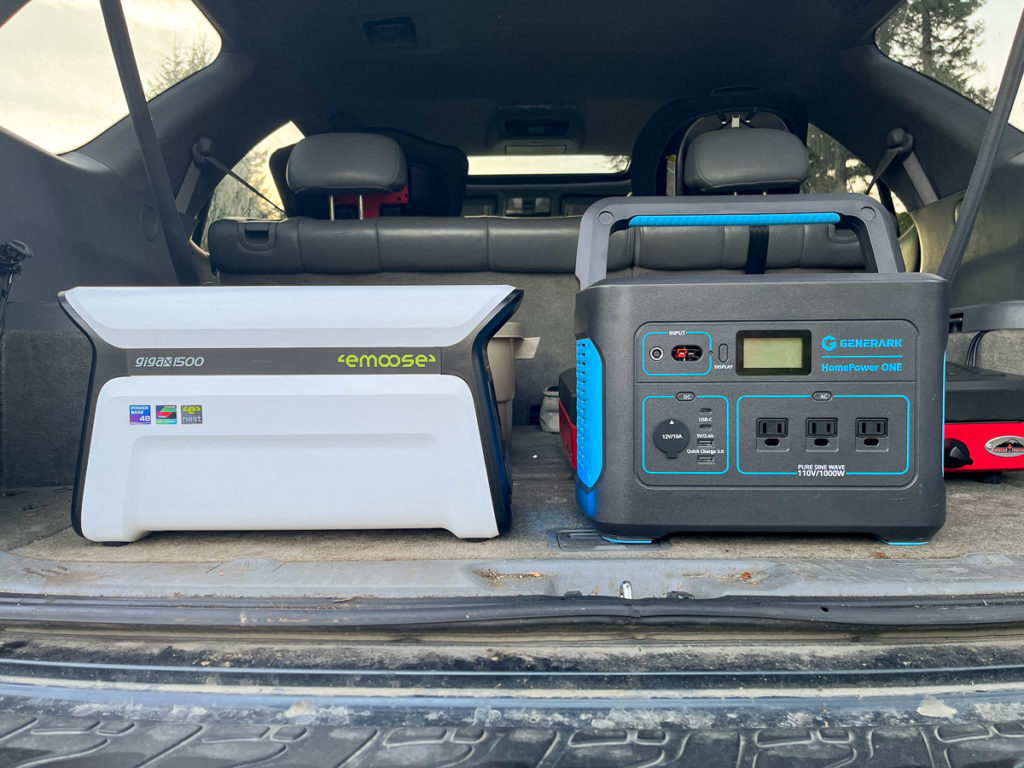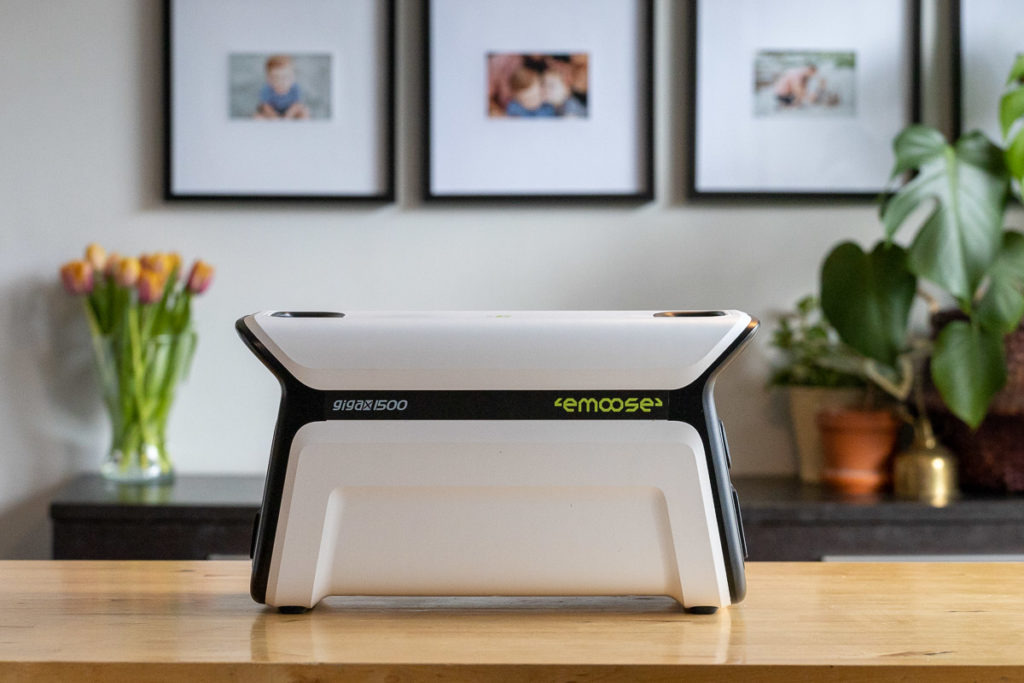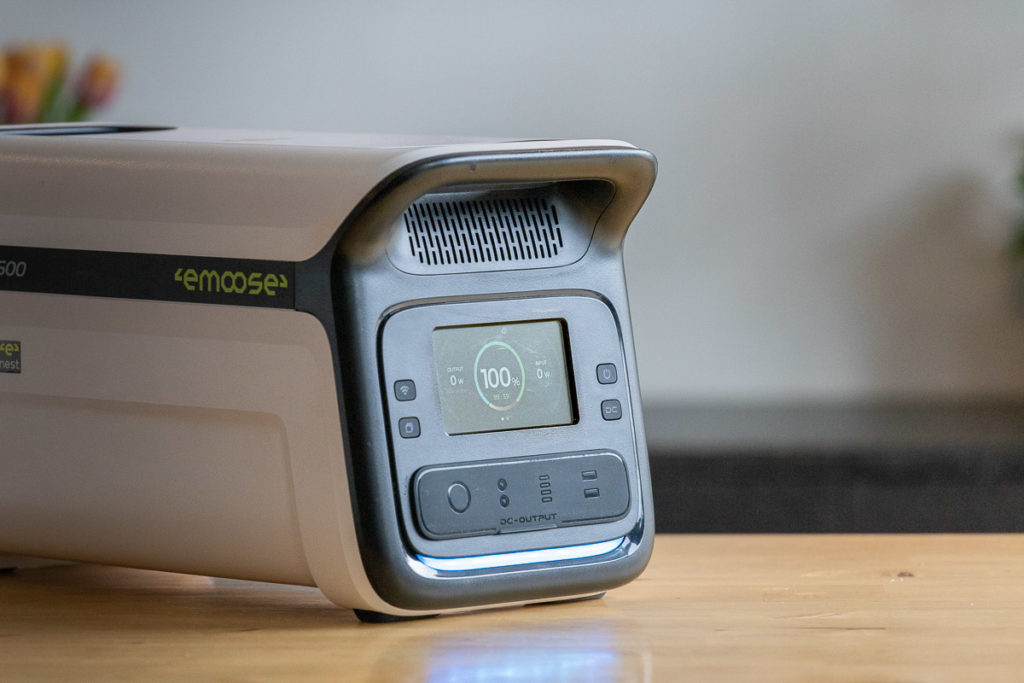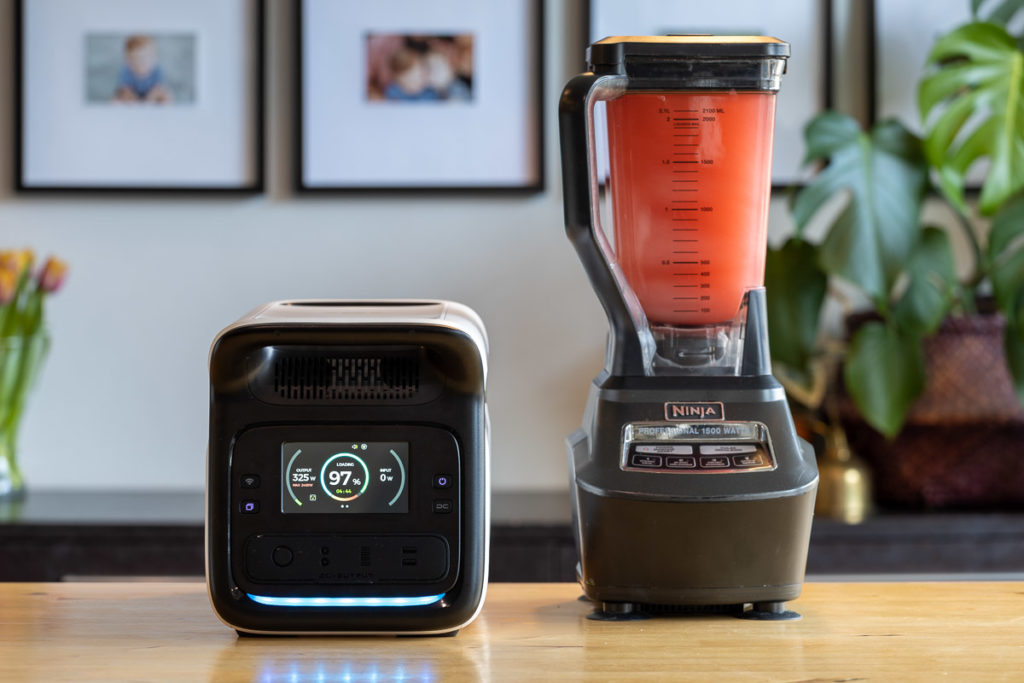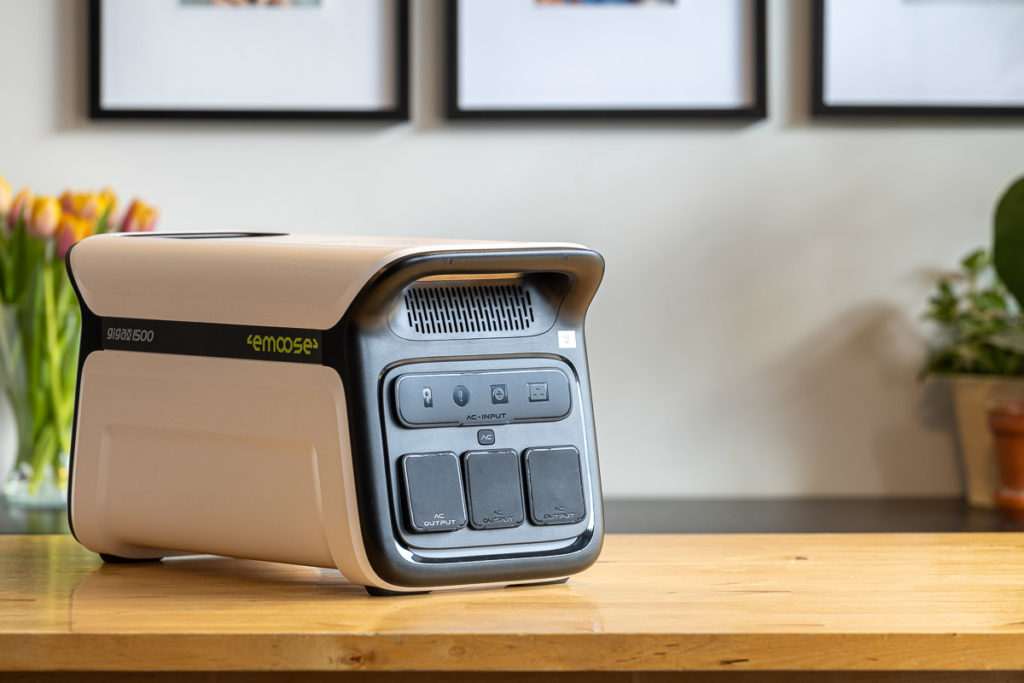Tons of power stations are hitting the market right now. They’re great for camping, power outages, and just powering tools around the house. Most of them are heavy and slow to charge.
emoose (yes, it’s not capitalized) is changing that with their GIGA X1500. With a massive 1502 watt-hours capacity and 2400 watt rating, it’s got more juice to go around than most of the small power stations. That 1502 watt-hours only weighs 31.9 pounds as well. So easier to carry.
If you need more power the X1500 has a Duo mode that pairs 2 together giving you 3004 watt-hours at 4800 watts. Sweet.
I got to put one of these brand new batteries through our testing before the IndieGogo went up May 9. Here’s my thoughts.
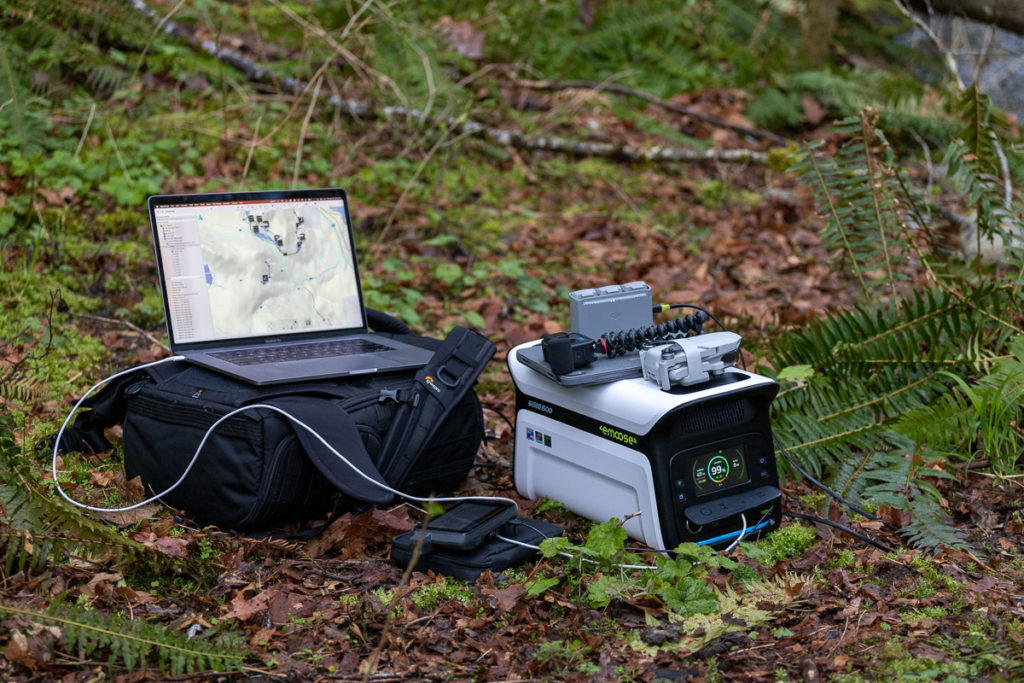
Pros
- 4 USB-C ports, 2 100 watts
- Chainable with 2 units
- Charges 80% in 50 minutes
Cons
- No wireless charging mat
- Have to flip up port cover each time
Specs
Summary of the X1500 features and specs:
- 1502 watt-hours capacity
- 2400 watts total output
- 12 output ports (details below)
- 2 input ports (details below)
- 1800 watt C-19 input for AC, 600W XT-60 input for solar panels
- 4 x 3 inch touchscreen display
- 5 year warranty
- 9.5 inch x 16.8 inch x 8.5 inch
- 32 pounds
The box comes with the X1500 battery battery, AC cord, MC4 cord for solar panels and car port charger.
The case has a flat top and a handle on each end for easy carrying. I found carrying with 1 hand worked sometimes but for walking longer distances holding both handles worked better. I find the handles on the ends more convenient for carrying than a top handle. And having a flat top works better for packing in the car or on shelves.
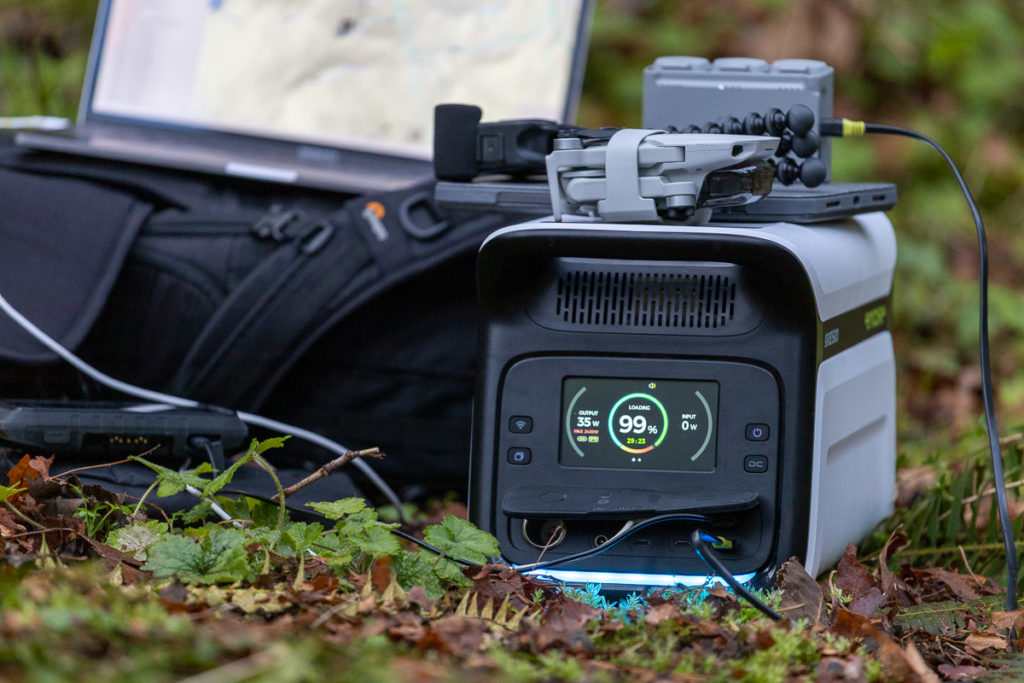
Output Ports
The X1500 comes with a good set of ports. USB-C is the new oval USB port. USB-A is the old rectangle.
- 3 AC ports
- 2 USB-C PD3.0 100W ports
- 2 USB-C 18W ports
- 2 USB-A 18W ports
- 2 DC (DC 5524, 13.3V/8A) ports
- 1 car socket (13.3V, 10A)
I was stoked to see 4 USB-C ports. Many power stations are coming with only 1 USB-C port these days but most electronics are coming with a USB-C charging cord. Larger electronics like laptops can charge from USB-C up to 100 watts so this battery can charge 2 Macbook Pro laptops straight from USB-C, no power block required. Nice.
The 18 watt ports charge iPads and phones faster (if they support it) compared to the 2.5 to 5 watts of standard USB ports.
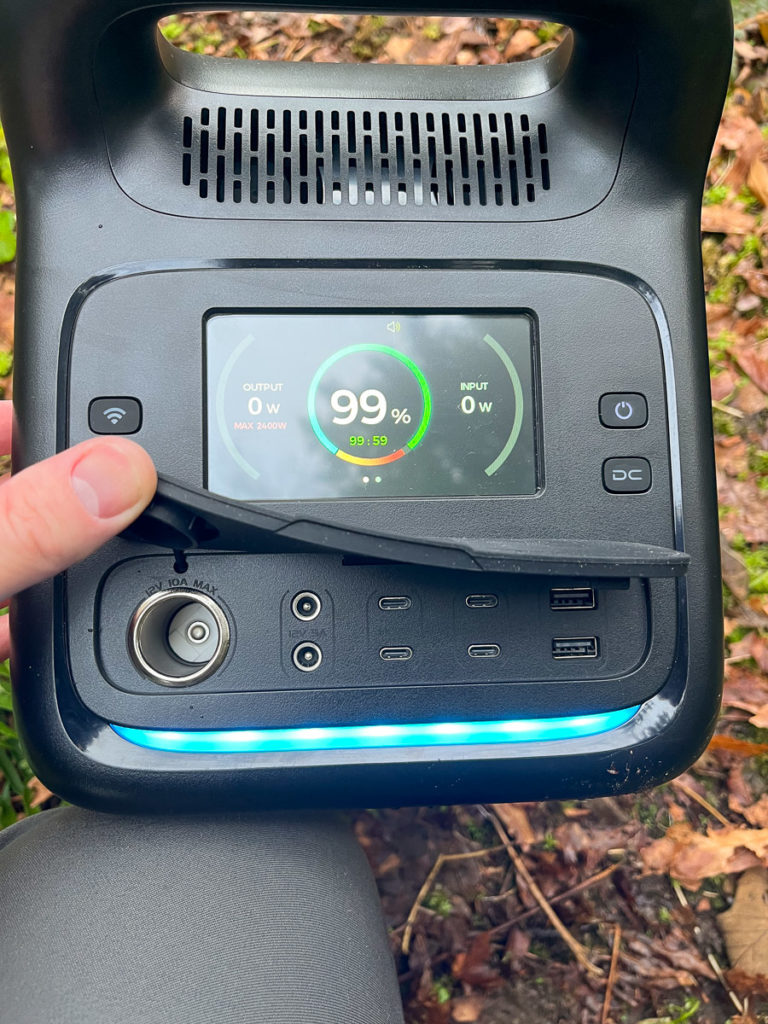
I would have liked to see a wireless charging mat on top. That said, wireless charging mats are a fairly specific need and not everyone can use them and you can’t store things on top of the battery when it’s in use as well so maybe that’s a benefit. The Litheli B600 battery has a wireless charging mat on top but then you can’t put anything metal on top while the ports are charging.
The ports have a rubber cover on them to keep dirt and moisture out. My only gripe about this cover is having to lift it every time you want to plug something in. Most other batteries are just open with no cover on the ports.
The AC outlets are 110 volts just like your house. The car socket is just like the DC port in your car, great for plugging in tire air pumps or travel fridges.
Input Ports
To charge the X1500 there are 2 input ports: the AC port (C-19) and solar port (XT-60).
The AC port can charge up to 1800 watts in. The solar port can take up to 600 watts in from daisy-chained solar panels.
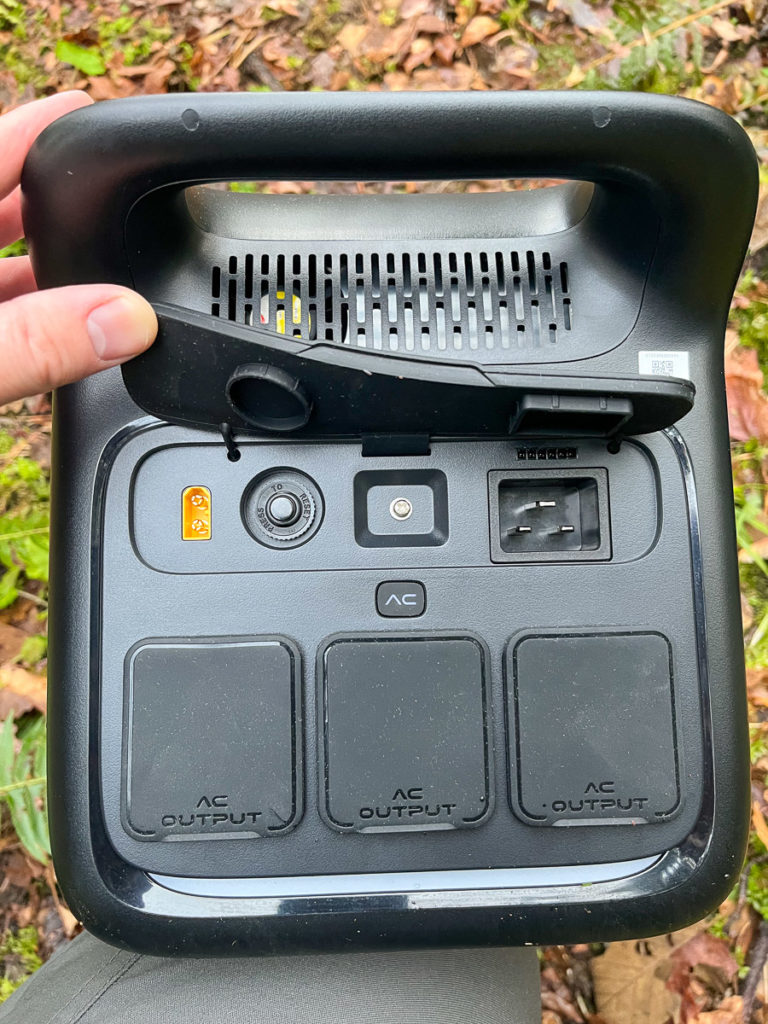
What can it charge?
The X1500 can charge anything that you can plug into USB-C, USB-A, DC, or AC ports up to 2400 watts. That’s just about anything in your house except for large appliances like standard fridges and ovens. You can plug in TVs, baby monitors, fans, air conditioners, iPhones, laptops, fish tanks or CPAP machines.
You can charge any number of things up to 2400 watts at once. That’s like the maximum output. Anything with heat like hair dryers draws a lot of power like 1000 or 1500 watts.Check out the kitchen appliance test below to see what power some popular appliances use.
The capacity is 1500 watt-hours which means you can charge something that draws 100 watts for 15 hours. Or something that draws 10 watts for 150 hours.
My iPhone 13 mini draws 10 watts when it’s charging. emoose says the the X1500 can charge an iPhone 14 63 times. That certainly lasts longer than any of my camping trips. The trick is to get the battery to last the camping trip or power outage with multiple devices plugged in.
As a first test, I tried some kitchen appliances. I have never taken these camping but who says you can’t?
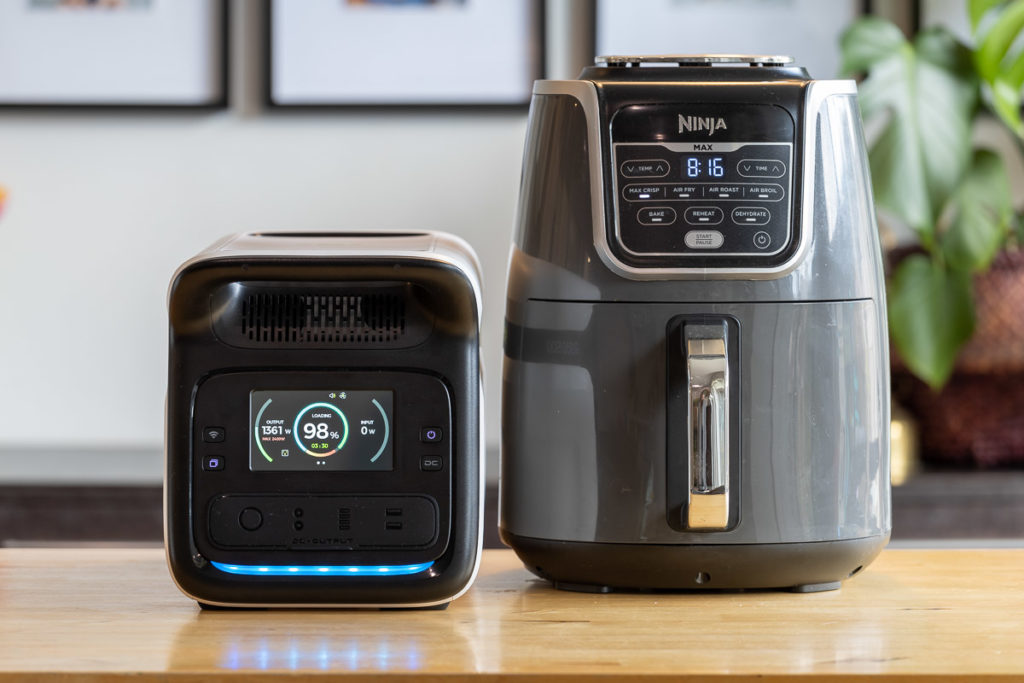
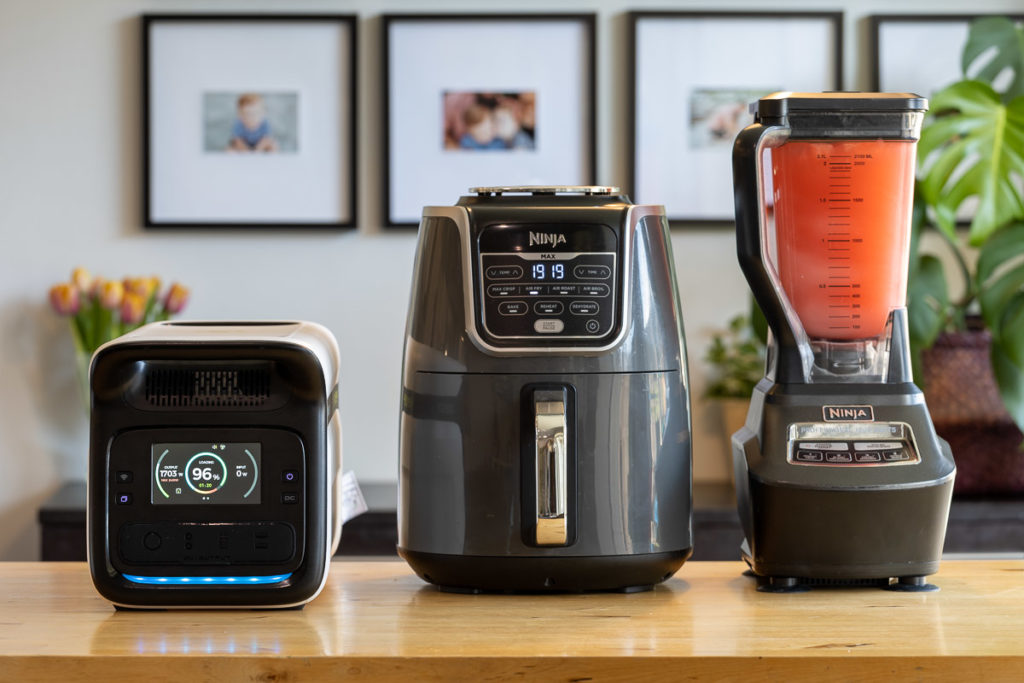
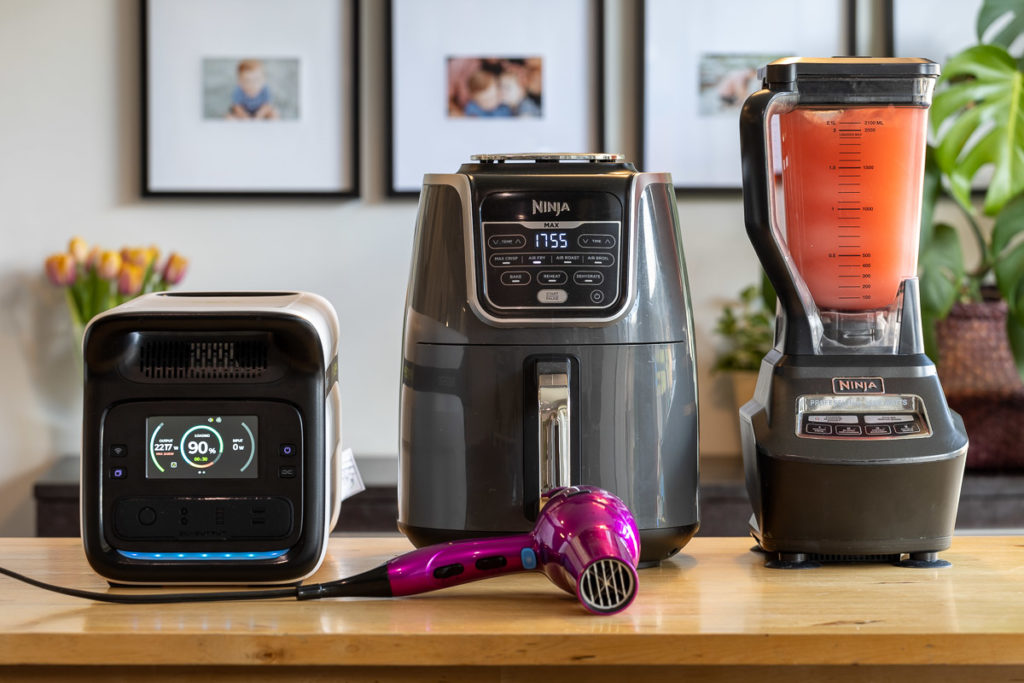
Running all these appliances at once is probably rare. The X1500 can easy do any of them at one time. Definitely makes you appreciate how much is plugged into your house at once!
How fast can it recharge?
Fast charging is handy for batteries when you forgot to charge it up or you’re at a friends house and the power is out at yours. Some batteries can take over 10 hours to fully charge up.
emoose says the the X1500 can charge up 80% in 50 minutes. Does it actually get that?
Yes, actually it does. It can do 80% in 50 minutes and 100% in 1 hour and 10. After fully discharging and charging up the emoose, it’s been consistently charging wildly fast at up to 1700 watts in. That gives it a fast charge time of just over an hour for the whole battery.
The fan does come on while it’s charging this fast at just over 50 decibels so you can certainly hear it. With the app you can disable the Turbo BOOST fast charging. I wasn’t able to test this, having having the app.
With 300 watts of solar, you can recharge in about 3 hours. I could get 30 watts input charging from my car as well.
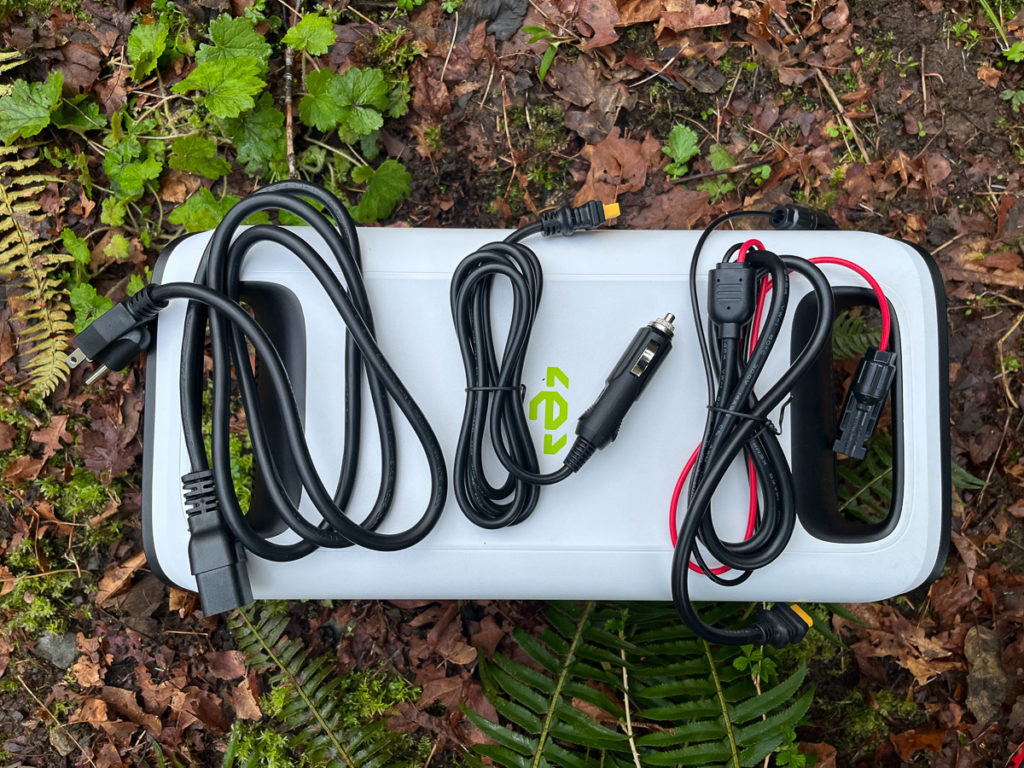
What does the app do?
An app is available from emoose that connects to the X1500. I haven’t used the app yet as it was out while I was testing
With the app you can:
- Connect to your phone with bluetooth and your wifi for updates
- track current charge
- track wattage going in and out
- Turn Turbo Boost for outgoing AC on/off
- Turn Healthy/Power Turbo mode for charging on/off
- Change the color and brightness of the light
For any firmware updates, the app lets you hook the battery to wifi and download what you need.
Duo Mode
With Duo Mode you can plugin 2 of the X1500’s together and get a huge output of 4800 watts and 3004 watt-hours of charge. For the most part they operate just like one large unit but I haven’t tested this feature as I only had the one unit to test.
EPS Mode
The X1500 also has an Emergency Power Supply Mode which passes through power from AC to the battery outlets. If the power goes out, the battery switches over to battery power in 20ms. This isn’t enough for a full desktop computer to be still be running but plenty for a laptop, lights or any other equipment that can be without power for 20 ms.
emoose Alternatives
emoose isn’t the only power station on the market but is the only with this combination of power and ports. No other power station this size has 2 100 watt USB-C ports.
The 1500 Wh power stations from Bluetti, Jackery, AllPowers and BioLite 1500 are compared below.
| emoose GIGA X1500 | Bluetti eb150 | Jackery Explorer 1500 | AllPowers S2000 | BioLite Basecharge 1500 | |
| Weight | 32.0 lbs 14.7 kg | 37.9 lbs 17.19 kg | 35.2 lbs 15.5 kg | 31.96 lbs 14.5 kg | 28.5 lbs 12.9 kg |
| Size | 16.8 x 9.5 x 8.5 inches | 14.6 x 6.5 x 14.4 inches | 14 x 10.4 x 12.7 inches | 14.76 x 9.64 x 9.84 inches | 14.4 x 12.2 x 8.2 inches |
| Capacity | 1502 Wh | 1500 Wh | 1534 Wh | 1500 Wh | 1521 Wh |
| Power Rating | 2400 watts 4800 peak | 1000 watts 1200 peak | 1800 watts 3600 peak | 2000 watts 4000 peak | 1200 watts 2400 peak |
| Input Ports | XT-60 600w input (solar panel) C-19 1800W input (AC) | 7.9*0.9mm DC (AC Input 160 watt) | 2 8mm DC | 1 XT-60 | AC/Solar/DC Input 400W USB-C PD 100W |
| Output Ports | 3 AC 2 USB-C PD3.0 100W 2 USB-C 18W 2 USB-A 18W 1 car charger 2 DC | 2 AC ports 1 45W USB-C port 4 USB-A 1 car charger | 3 AC ports 1 USB-C 18W port 1 USB-A QC 3.0 port 1 USB-A port 1 car port | 4 AC 2 USB-C PD 100W 2 USB-A QC3.0 ports 2 USB-A ports 1 car port | 3 AC 1 USB-C PD 100W 2 USB-C 2 USB-A 1 car port 2 12V DC 10W Wireless charging mat |
| Charge Time | 80% in 50 minutes on AC 3 hours with 300 watts solar | 8 hours from AC 9-10 hours from 200W solar panel | 6 hours AC 15.5 hours 12V car adapter 9.5 hours 2 100W solar panels | 4 hours AC 1.6 hours solar and AC 3 hours 500W solar panels | 13.5 hours AC 8 hours AC and USB-PD 4 hours 4 100W solar panels |
| Price | $1,099 USD on Indigogo ($1,599 USD after on Amazon) | $899 USD $1,699 CAD | $1,699 USD $1,999 CAD | $1,699 USD $1,499 CAD | $1,699 USD $2,199 CAD |
Ecoflow, Litheli, Anker and Runhood also have large power stations but none that are exactly 1500 Wh.
The X1200 from emoose is similar to the X1500 but is 1167 watt-hours.
Recommendation
The emoose GIGA X1500 power station gets a 2 big thumbs up from me: Highly recommended.
The 4 USB-C ports and insanely fast charging are the best parts of the this power station.
Everything else worked well and I had absolutely no issues with it. Without testing the app, I can’t comment on what works well there but from the look of everything else, they’ve done a lot of testing and it will be solid like the rest of the functions.
The weight is close to some of the power stations of this capacity but getting all these features for cheaper is a great deal. $500 off the price for the Indiegogo campaign is going to be a steal!
More Photos
